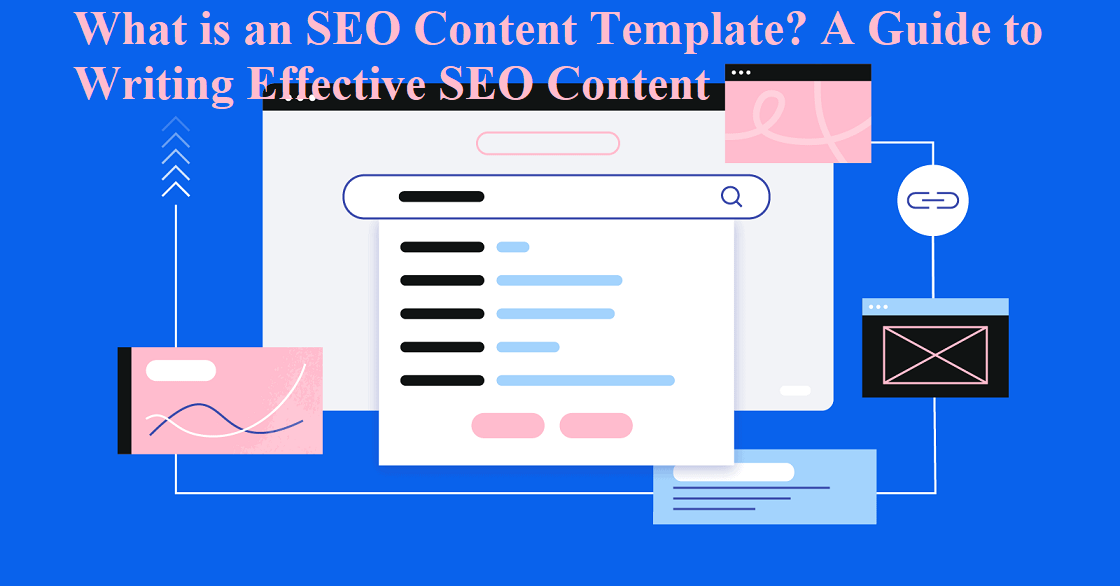An SEO Content Template is a structured document designed to guide content creators in producing search engine optimized material that ranks well in search results. This template serves as a blueprint, ensuring that content is not only high-quality but also aligns with SEO best practices. An SEO Content Template is an essential tool for anyone looking to improve their online visibility through optimized content creation. Writers can produce material that not only meets user needs but also adheres to search engine algorithms, ultimately driving more traffic and conversions. Well-structured blog posts and perfectly optimized contents for search engines play a vital role to enhance the traffic and ranking.
SEO Content templates provide strong fundamentals to boost website ranking based on targeted keywords. The main objective to use SEO content is to attract traffic through search engine optimizing. Always focus to create content to inspire traffic to your site and explicitly at ranking well in search engine results. Use short tail and long tail keywords after SWOT analysis of the websites and chose the best strategies to for getting ranks in search results. During blogposts writing, focus should be to use quality keywords, Meta tags, titles / heading usage, writing styles, writing flow, keywords density and anchor links.
Key Components of an SEO Content Template
-
Target Keywords
The primary and secondary keywords that the content aims to rank for are central to the template. These keywords help search engines understand the content's focus and relevance. -
Title Tag
This HTML element specifies the title of the webpage and should include the primary keyword to signal relevance to search engines while being compelling enough to attract clicks. -
Meta Description
A concise summary (typically 160 characters) that appears in search results, it should include the primary keyword and provide a brief overview of the content's value. -
Content Structure
Guidelines on headings (H1, H2, H3, etc.) help organize the content logically, enhancing readability and user engagement. -
Readability Score
Recommendations for how easily the content can be read by users, often measured by tools that assess sentence length and complexity. -
Content Length
Suggested word count based on analysis of top-ranking pages for the target keywords, ensuring comprehensive coverage of the topic. -
Semantically Related Keywords
These are additional keywords that can enhance content relevance and help cover a broader range of related topics. -
Backlink Targets
Recommendations for websites where backlinks could be acquired to improve content authority and ranking potential.
Benefits of Using an SEO Content Template
-
Consistency
Templates promote a uniform structure across various pieces of content, making it easier for search engines to index and rank them effectively. -
Efficiency
By providing a clear framework, templates save time in the content creation process, allowing writers to focus on delivering valuable information rather than organizing their thoughts from scratch. -
Enhanced Engagement
Well-structured content is more appealing to readers, which can lead to higher engagement rates and lower bounce rates on websites.
A Guide to Writing Effective SEO Content
Creating effective SEO content involves a strategic approach that combines keyword research, audience understanding, and quality writing. You Prioritizing quality alongside optimization is a key to achieving long-term success in search engine visibility. Here’s a comprehensive guide to help you craft SEO-optimized content that ranks well and engages readers.Steps to Writing Effective SEO Content
-
Know Your Audience to Identify Needs to Set Engagement Goals
Develop buyer personas based on market research to understand your audience's preferences and pain points. Determine what you want your audience to do after consuming your content engage, purchase, or explore more.
-
Conduct Keyword Research and Use Tools
Use tools like Google Keyword Planner or BrandWell to find keywords with good search volume and low competition. Understand the intent behind keywords (informational, navigational, commercial, transactional) to align your content accordingly.
-
Create a Compelling Title Tag - Inclusion of Keywords
Ensure your title tag includes the primary keyword and is attention-grabbing, ideally within 60 characters.
-
Write a Persuasive Meta Description - Summary and Keywords
Craft a concise summary (up to 160 characters) that includes the main keyword and entices users to click through.
-
Structure Your Content
-
-
Headings and Subheadings
Use a clear heading structure (H1, H2, H3) to improve readability and help search engines understand your content hierarchy. -
Short Paragraphs
Keep paragraphs concise to maintain reader interest and improve scannability.
-
-
Focus on Quality and Value
Your content should provide thorough answers or solutions, making it the best result for the target keyword. Ensure the content is unique and offers fresh insights or perspectives on the topic.
-
Optimize for Keywords - Use Synonyms
Use primary and secondary keywords naturally in the content that looks naturally fitted and always focus to avoid keyword stuffing. Include related keywords to enhance context and relevance.
-
Enhance Readability by Visuals and Lists
Use images, infographics, bullet points, and numbered lists to break up text and make information digestible. Write in clear, straightforward language accessible to all readers.
-
Internal and External Linking
Include relevant internal links to other pages on your site and external links to authoritative sources for additional value.
-
Regular Updates
Regularly revisit and update existing content to reflect current trends and maintain relevance in search rankings.
